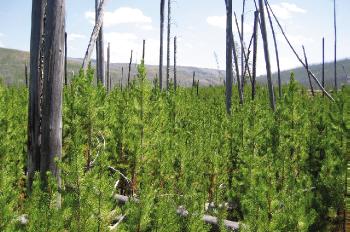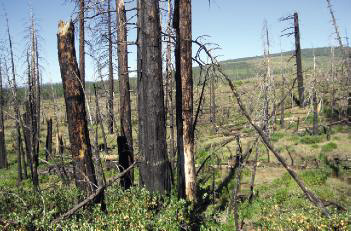
Fire ecologists say it will take decades for forests to recover from the Rim Fire in Yosemite National Park, given the extent of the high-severity burn. Now they’re adding another concern to that list: California’s dry weather.
The sprawling stands of dead trees, an estimated 40 percent of the burned area, are reminiscent of another major national park fire: Yellowstone in 1998.
“Initial response was that Yellowstone had been destroyed and it was a disaster,” says Malcolm North, a Forest Service ecologist. “We’ve come to understand that fire was actually very characteristic for Yellowstone and did a lot of ecological benefit.”
But here, not so much. Forests in Yellowstone adapted to high-intensity fires, as seen in the lodgepole pines commonly found there. “The cones on the tree are actually sealed with pitch and only open up and release new seeds under high-intensity fire,” says North. “We have lodgepole pine in California but in almost all of it, the cones do not open and release seeds the same way.”


Mid-elevation forests, like the area of the Rim Fire, have historically seen frequent, low-intensity fires where most of the large trees survive and seed the next generation. “You need to have live trees nearby an area for the seed to be blown in on the wind,” North says.